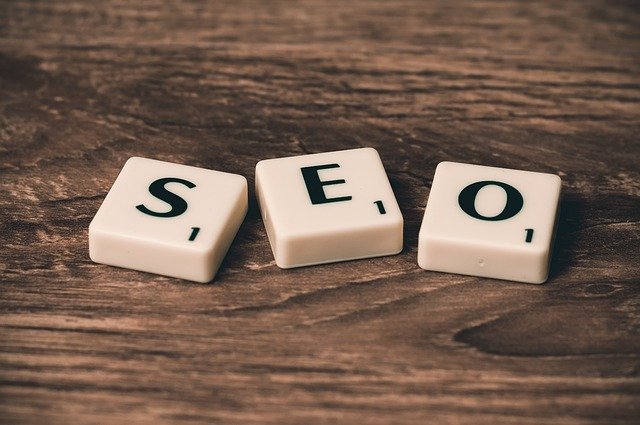
SEO
The information available online regarding SEO and PPC campaigns is almost too much. There are many new words for particular concepts and even more acronyms representing statistics, tools, and more. If you’re new to the world of SEO and PPC advertising, all of this information can be overwhelming. To help you understand it, we’ve compiled a list of standard SEO and PPC acronyms and definitions.
Beginning a marketing campaign shouldn’t leave you with negative feelings, overwhelmed, and frustration. Although marketing campaigns are a lot of hard work, we don’t want to overcomplicate things. That way, you can learn about digital marketing secrets while feeling confident about the success of your campaign. So, let’s jump into the two base-level acronyms.
Pay-per-click (PPC)
Pay-per-click (PPC) is a form of advertising where companies buy ad space on platforms like Google, Yahoo, and Bing by charging a fee each time someone clicks the ad. PPC is a great way to drive traffic to your website, but it can be expensive if not managed correctly.
The most common PPC platform is Google Ads (formerly known as Google AdWords). Google Ads allows you to bid on keywords that you think potential customers will use to search for your product or service. Then, when someone searches for one of your keywords, your ad may appear at the top of the search results page.
If you’re new to PPC advertising, we recommend starting with Google Ads. It’s the largest and most popular PPC platform, so plenty of resources are available to help you get started.
Search Engine Optimization (SEO)
Search engine optimization (SEO) is the process of improving your website’s visibility in search engines. The goal of SEO is to rank higher in search engine results pages (SERPs), which will result in more organic traffic to your website.
Organic traffic is the term for visitors who find your website through a search engine instead of other forms of marketing like PPC or social media advertising. Many factors go into ranking higher in SERPs, but some of the most crucial ones are keyword research, on-page optimization, and link building.
If you’re new to SEO, we recommend starting with on-page optimization. That means creating high-quality, shareable content using keywords relevant to what your target audience is searching.
Cost per click (CPC)
The average cost per click is the amount you pay each time clicking on your PPC ad. Therefore, CPC is a crucial metric to track because it tells you how much you spend on each click and can help you optimize your PPC campaigns.
To calculate your CPC, divide your total spend by the number of clicks you received. For example, if you spent $100 on PPC ads and received ten clicks, your CPC would be $10. Another reason why CPC is a crucial metric is that it allows you to see which campaigns are most profitable for your business. Typically, the more clicks you get for the lowest price will be the campaigns you want to scale. CPC is a way to understand what your digital marketing budget should look like.
Click-through rate (CTR)
Click-through rate (CTR) is a metric that measures how often people who see your ad end up clicking it. Calculate CTR by dividing the number of clicks your ad receives by the number of times shown (impressions).
For example, if your ad is shown 1,000 times and receives ten clicks, your CTR would be 1%. A high CTR means that people who see your ad are more likely to click it, which is a good sign that your ad is relevant and exciting.
According to Digital Authority Partners, CTR is an essential PPC metric to track because it tells you how well your ads perform. For example, if you’re not getting many clicks, that could mean that your ads need to be more relevant or exciting.
Conversion rate (CVR) or Conversion rate optimization (CRO)
Conversion rate (CVR) measures how often people who click your ad take the desired action on your website. That action could be anything from purchasing to signing up for your email list.
There are many ways to improve your CVR, but common tactics include A/B testing, optimizing your website for mobile devices, and hiring a copywriter.
Content management system (CMS)
A content management system (CMS) is a platform that allows you to create, edit, and publish content on your website. WordPress and Squarespace are two famous examples of CMS platforms.
Using a CMS makes it easy to keep your website up-to-date without hiring a web developer. That means you can edit your site anytime and reduce software costs since you don’t need to know how to program. Additionally, CMS platforms allow you to curate your design for the best user experience (UX) possible. Intuitive design, fast speed, and quick navigation are all core components of a CMS.
Domain authority (DA)
Domain authority (DA) is a metric that measures how likely your website is to rank in search engine results pages (SERPs). DA ranges from 1-100, with 100 being the highest possible score.
DA calculates according to factors, such as the domain’s age, number of backlinks, and quality of your content. A higher DA score increases the likelihood that your website ranks first for different keywords. Additionally, receiving backlinks from sites with high DA scores will improve your DA score.
Key performance indicator (KPI)
A key performance indicator (KPI) is a metric that you track to measure the success of your marketing campaigns. KPIs vary depending on your business goals, but some common examples include website traffic, conversion rate, and email subscribers.
Tracking KPIs allows you to see which marketing strategies are working and which need improvement. For example, if you’re trying to increase website traffic, you might track the number of visitors to your site each month. Conversely, decreasing traffic could signal that you need to improve your SEO or create more captivating content.
Takeaways
SEO and PPC are two essential digital marketing strategies businesses should use. SEO helps you rank higher in search engine results pages, while PPC allows you to pay for clicks from interested customers. Both of these strategies can be highly effective when used correctly. However, tracking your key performance indicators (KPIs) is vital to ensure you get the most out of your campaigns.






